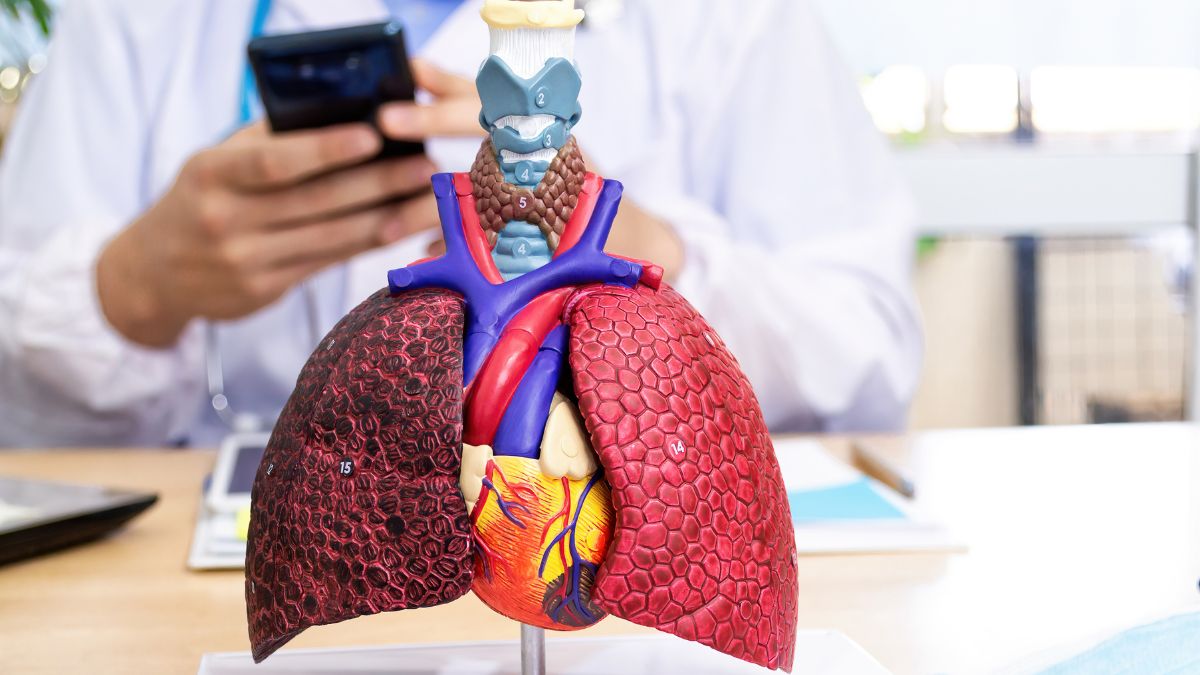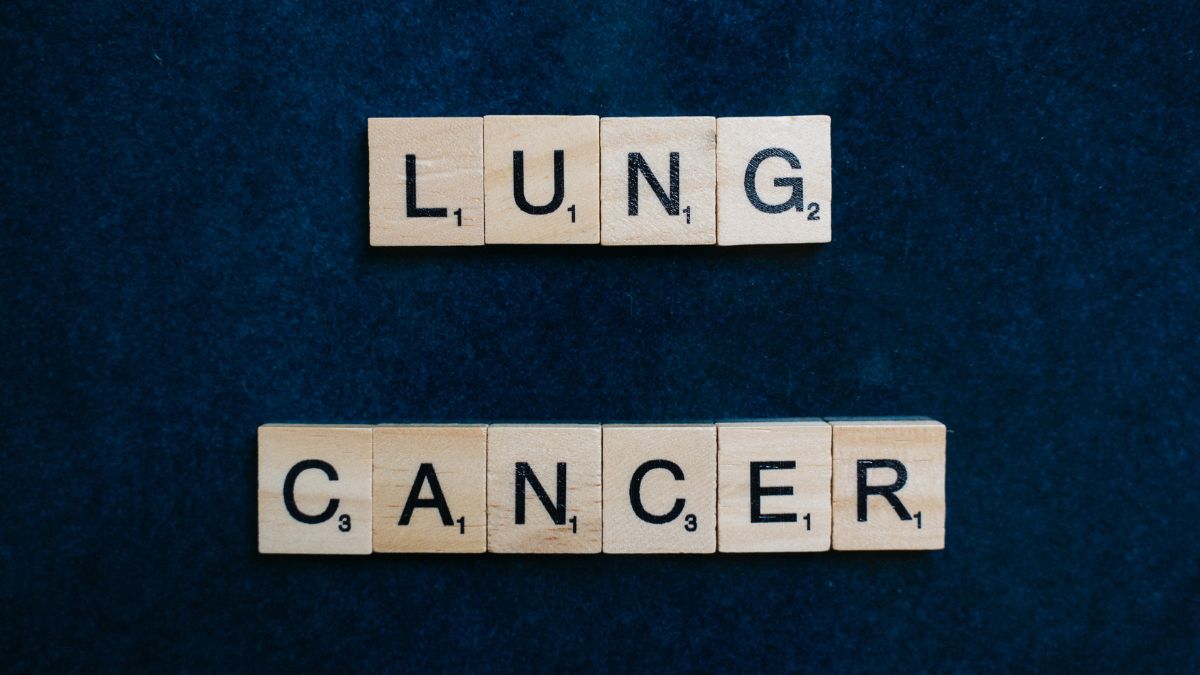- By Priyanka Munshi
- Thu, 18 Jan 2024 05:52 PM (IST)
- Source:JND
Surprisingly, the number of nonsmokers receiving lung cancer diagnoses is rising, refuting the widespread belief that tobacco use is the only risk factor for the disease. These cases demonstrate the complexity of lung cancer, which is also susceptible to the effects of genetic predispositions, environmental variables, and pollution exposure. Although smoking is still the greatest risk factor, it's important to understand that those who don't smoke, such as young people and those who lead healthy lifestyles, can nevertheless get this condition.
It is crucial to comprehend and manage these many risk variables in order to develop individualized treatment plans and early detection techniques for this unanticipated group of people receiving lung cancer diagnoses.

Reasons Why Non-Smokers Are Getting Diagnosed With Lung Cancer (Image Credit: Canva)
Dr. Jyoti Mehta, who is a radiation and clinical oncologist at the TGH Onco-Life Cancer Centre in Talegaon, exclusively told Jagran Enlish about why non-smokers are getting diagnosed with lung cancer.
According to Dr. Jyoti, "While smoking poses the highest risk of developing lung cancer, it doesn't guarantee that non-smokers will not suffer from the disease. A large number of non-smokers are also diagnosed with lung cancer. In the below article, we help you understand the causes of lung cancer in non-smokers and give vital tips to prevent it. Lung cancer is characterized by the uncontrolled growth of abnormal cells within the lung tissue. It is a known fact that tobacco consumption in the form of smoking is the prime cause of lung cancer. But even non-smokers tend to suffer from it. Lung cancer is seen in people of all age groups and requires timely intervention for improved survival rates and quality of life for the patient."
- Second-Hand Smoking, exposure to second-hand smoke, radon gas, and air pollution are all significant factors that can contribute to the development of lung cancer in those who do not smoke.
- Occupational hazards such as asbestos, silica, etc., and certain chemicals have been linked to an increased risk of developing lung cancer among non-smokers.
- Genetic predisposition plays a critical role in the occurrence of lung cancer in non-smokers. Certain genetic mutations can elevate the susceptibility to lung cancer even in individuals with no history of tobacco use.
- Eating a diet high in processed foods and low in fruits and vegetables may heighten the risk of developing this disease, providing further evidence that lifestyle choices play a crucial role beyond smoking alone when it comes to this devastating illness.
- Air pollution is a silent killer and can cause lung cancer. Fine particulate matter, such as PM2.5, found in polluted air has been linked to an increased risk of lung cancer development. These tiny particles can penetrate deep into the lungs, causing inflammation and DNA damage that can lead to the formation of cancerous cells. The presence of pollutants from cooking stoves contributes to the overall burden of harmful substances in the air we breathe and can lead to lung cancer.
Common Types Of Lung Cancer Seen In Non-Smokers
Adenocarcinoma: The most common type of lung cancer in non-smokers is adenocarcinoma, which typically is seen in the peripheral part of the lungs and may remain asymptomatic for an extended period. In many cases, cancer has already spread to other parts of the body, such as the bones and liver, by the time it is diagnosed. Early-stage adenocarcinoma is usually treated with surgery or radiation, followed by chemotherapy. Unrespectable or advanced-stage tumors, if non-metastatic (not spreading to other parts of the body), can be treated with radiation and chemotherapy, and if metastatic (spreading to other parts of the body), are treated with chemotherapy and targeted therapy.
Squamous Cell Carcinomas: These cells are characterized by tumors that develop in the central part of the lungs, typically in the larger bronchi connecting the trachea to the lungs. Treatment for squamous cell carcinoma is in the form of surgery, chemotherapy, radiation therapy, targeted therapy, immunotherapy/targeted therapy, or a combination of these options, depending on the stage. It is recommended that patients diagnosed with non-small cell lung cancer undergo further investigations, i.e., genetic testing, which is done on a lung tissue biopsy or a liquid biopsy (blood test), to decide among different targeted therapies or immunotherapy.
Mesothelioma: This is caused by exposure to asbestos and leads to the development of malignant tumors originating in the protective membranes of the lungs, heart, and abdomen. Treatment options such as surgery, chemotherapy, and radiation therapy can be explored for managing the disease or providing palliative care when a cure is not feasible.
Symptoms Of Lung Cancer:
- For non-smokers, lung adenocarcinomas are the most prevalent type, making early symptoms easy to miss, such as fatigue, slight shortness of breath, and upper back or chest pain.
- As the disease progresses, symptoms become more consistent with all types of lung cancer, including chronic cough, blood or mucus in the cough, wheezing, fever, difficulty swallowing, hoarseness, weight loss, and poor appetite.
- Mesothelioma may present with additional symptoms such as swelling of the face and arms, difficulty swallowing, an irregular heartbeat, and pain in the shoulder, chest, or lower back.
- It will be very important for one to consult the doctor to decide the appropriate line of treatment for them based on the symptoms, type, and stage of cancer they have.
Complications Linked To Lung Cancer
Superior Vena Cava Obstruction: The most common complication of advanced-stage cancer in the upper lobe of the lungs can compress the neck veins, which can cause facial edema and breathlessness, making emergency conditions difficult to treat. Spinal cord compression is another common complication that occurs when disease spreads to vertebral bones. It can compress the spinal cord nerves, which supply the lower limb. Patients will have lower limb weakness, and it becomes urgent to treat them immediately.
Respiratory infections: Lung cancer can cause respiratory complications such as pneumonia, bronchitis, or pleural effusion, which can significantly impact a patient's quality of life.
Deep vein thrombosis (DVT): Another significant complication is the development of blood clots, also known as deep vein thrombosis (DVT) or pulmonary embolism. These blood clots can lead to serious health risks and require immediate medical attention.
Addressing these complications typically requires a holistic strategy, which can encompass the use of medication, adjustments to one's lifestyle, various therapies, and guidance from the doctor to enhance the patient's well-being throughout and following treatment.

Reasons Why Non-Smokers Are Getting Diagnosed With Lung Cancer (Image Credit: Canva)
Tips To Prevent Lung Cancer In Non-Smokers
- Avoid second-hand smoke exposure at home or when you are outside (at work or in public places).
- Maintaining a healthy lifestyle, including regular exercise and a balanced diet, can also help lower your chances of developing lung cancer.
- Be aware of environmental toxins and pollutants. It's essential to test your home for radon and take appropriate measures if levels are elevated.
- Minimizing exposure to air pollution and harmful chemicals can help reduce the risk of developing lung cancer.
- At last, Dr. Jyoti said, "Making lifestyle changes such as staying physically active and being mindful of environmental toxins can all play critical roles in preventing lung cancer. By taking proactive steps to protect yourself and your family members from harmful substances and maintaining overall wellness, you can significantly lower your risk of developing lung cancer."

